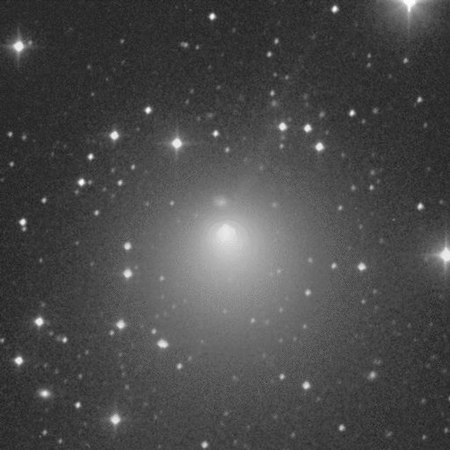Fireball observed over Northern Finland and Sweden on 2020-12-04 13:30:37 UTC
We've recently installed a meteor camera system in Skibotn with the help of Ketil Vegum, Steinar Midskogen, and Torsten Aslaksen. This meteor camera uses software developed by Steinar Midskogen and is connected to the Norwegian meteor network. This meteor camera was commissioned on the night of Thursday 2020-12-03.
Already on the very next day, we observed a spectacular fireball. This meteor was observed in daylight and it was approximately -13 apparent magnitude (very rough estimate) -- i.e., about as bright as the full Moon [see Steinar's write-up]. There were many eyewitness reports of this event as well. Because there is another meteor camera station operated by Ketil Vegum in Sørreisa, a triangulation of the trajectory was possible. Here's a video of the event captured with both cameras:
The fireball was associated the the Northern Taurids meteor shower. Based on the entry velocity (30 km/s) and brightness, a size estimate between 1-100 kg can be made. Based on video camera observations, the meteor completely burned up in the atmosphere. No rumbling sounds were reported by the eyewitnesses either, which probably means that no rocks made it down to the ground.
It has been recently proposed that the Northern Taurids shower is associated with 2004 TG10, which is a near Earth object that is approximately 1 km in diameter. This near Earth object has also been suggested to be a fragment of a larger comet that broke up a long time ago. Comet Encke is also proposed to have once been part of the same parent object as 2004TG10. All of this is much speculation, but a good story nevertheless.
 |
| "This is an image of short-period comet Encke obtained by Jim Scotti on 1994 January 5 while using the 0.91-meter Spacewatch Telescope on Kitt Peak. The image is 9.18 arcminutes square with north on the right and east at top. The integration time is 150 seconds." (From Wikipedia) |
This fireball provides us a good opportunity to study how meteors interact with the Earth's atmosphere. There are five meteor radars that observed the fireball. The Sodankylä meteor radar even was able to observe the head echo of the ball of plasma surrounding the meteoroid as it was burning up in the atmosphere.
 |
| The head echo observed with the Sodankylä 36.9 MHz meteor radar. |
The turbulent dusty plasma trail was also observed with the meteor radar and was visible for about six minutes, until diffusion and recombination reduced the plasma density to a point at which the echo from the trail no longer was visible.
 | ||
| The trail echo of the plasma created by the fireball as measured by the Sodankylä meteor radar. The color represent signal power in dB. |
The Sodankylä meteor radar is an interferometric radar, with seven receiver antennas, similar to the five antenna radar antenna shown below. This allows us to determine the angle of arrival of radar echoes. Together with range, this allows determining the 3d position in space for each portion of the echo. In order to study where the trail plasma echoes come from, we performed interferometric positions of each range-Doppler bin of the radar measurement.
 |
| The antennas of a specular meteor radar. Receiver antennas are shown in green and the transmitter antenna is shown in red. Figure: IAP Kühlungsborn. |
Here is a point cloud that maps the trail echo into 3d space as a function of latitude, longitude, height, and SNR.
 |
| Locations of the echoes obtained using interferometry with the Sodankylä meteor radar data using a custom processing scheme. |
Here is a short video of the location of the plasma trail overlayed on a map. Right after entry, the plasma trail is observed in the path of the meteoroid. The trail then diffuses away and is transported by the neutral wind in the mesosphere, which deforms the original linear shape.
Observations of meteor trail plasma for the fireball using the Sodankylä Geophysical Observatory meteor radar.
We were also able to observe plasma effects with an oblique ionosonde receiver located in Skibotn that is listening to the Sodankylä ionosonde that conducts a sounding every minute. The reflection point for this oblique path is by random chance approximately right where the fireball trail was located. On the oblique ionosonde receiver, a E-region enhancement in plasma denisty was observed for up to one hour.
 |
| Time-frequency-intensity plot of the E-region plasma density in the region between Sodankylä and Skitbotn, the region where the fireball trail was created. |
Here is a an example of the oblique ionogram observed immediately after the fireball occurred. The horizontal line shows the E-region trace that is due to the enhanced plasma density due to the fireball.
 |
| The Sodankylä Geophysical Observatory Alphawolf ionosonde transmission received in Skibotn using GNU Chirp sounder. |



Interesting data indeed... Thanks for sharing it. 73 de OH7HMS
ReplyDelete